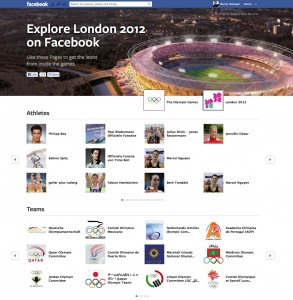Since the invention of paid-televoting and paid-short-messaging (SMS) the TV industry has creatively adapted or developed TV show formats to increase their revenues. Televoting is mainly used for decision making, opinion polling or game-shows. In the age of Facebook, where users spent most of their time on the social network, Endemol is introducing the first paid-online voting system via Facebook credits.
The consumer behavior is changing and is bridging the gap between TV and Web usage. TV Channels could not charge our TV audience for a “click”, that’s why the focus was on televoting as the major decision tool for BigBrother.
With over 600 million global Facebook users, of which are over 20 million in Germany, the social network is the place where consumers spend most of their time online. The usage of Facebook Fan-Pages or Facebook Apps have already lead to a new discipline for Marketeers. Social Media Marketing is now part of the modern Marketing Communication Mix.
In close teamwork with the Innovation Agency and Social Media Specialist, Ahead of Time, Endemol was working on new TV formats leveraging the power of social media. “With the introduction of Facebook Credits and the rise of other virtual currencies in social games such as Zynga’s farmville it was a logical step for us to develop a paid-voting system on Facebook”, says Monty Metzger, CEO of Ahead of Time.

“While we envisioned, inspired and strategically developed the concept, we collaborated for the technical development with one of the best App-Developer in Germany I can think of”, says Monty Metzger. PLAZZ Entertainment developed the Facebook Voting App for BigBrother Germany.
Jürgen Mayer, CEO of PLAZZ Entertainment, is convinced that the new Facebook Voting will be changing the TV industry and lead to new show formats, such as Televoting did in the nineties. “The technical development of innovative concepts like this is a challenge, but we did our best to deliver a high-quality user experience with a simple and attractive usability. And we are proud that we, as a german company, are setting new standards in the global entertainment industry”, says Jürgen Mayer.
The Facebook Voting App is integrated in the Fan-Page of Big Brother Germany at http://www.facebook.com/BigBrotherDeutschland
The Facebook Voting App is the first App that uses Facebook Credits for “non gaming” virtual goods. For the TV Channels this is a new revenue opportunity for the future. And virtual currency, like Facebook Credits, may become the standard for Social TV projects.
Endemol’s Facebook Voting App is just the beginning and there are already more ideas prepared for launch in the near future.
![]()
 The italian magazine Chi and french magazine Closer have published a series of topless picture of Kate Middleton the Duchess of Cambridge. Now Prince William and Kate Middleton are threatening to sue French magazine Closer for printing her topless pictures.
The italian magazine Chi and french magazine Closer have published a series of topless picture of Kate Middleton the Duchess of Cambridge. Now Prince William and Kate Middleton are threatening to sue French magazine Closer for printing her topless pictures.


 I want to inform you in advance that I will be leaving
I want to inform you in advance that I will be leaving 





 Today I want to introduce you to my friend Shaun Rein (
Today I want to introduce you to my friend Shaun Rein (





